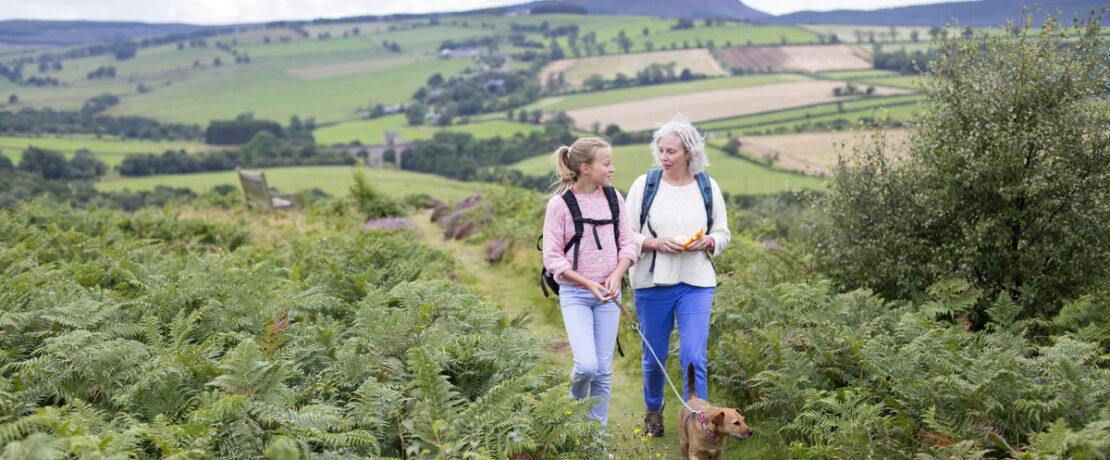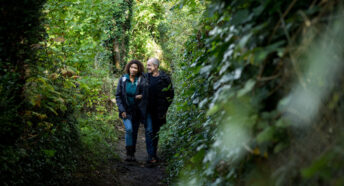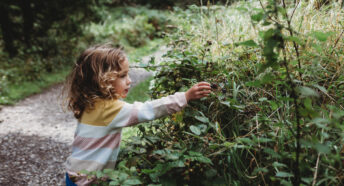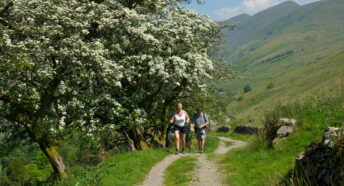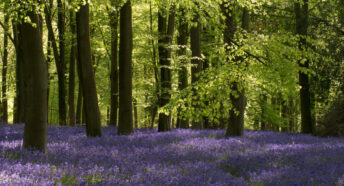Coming to the countryside near you: wildlife in June
And just like that, summer is upon us. During June, we celebrate the longest day of the year; over 16 hours of daylight in Cornwall, and up to 19 in Shetland, Scotland. Read on to find out about the wildlife you can discover in the countryside in June.
Nature seems to be at its busiest right now. The hedgerows are bursting with colour and waterways are teeming with life. Meadows thrum with an invertebrate orchestra and young birds are taking their first flights. Fox cubs tumble in the fields and fawns take their first tentative steps at their mothers’ sides.
Swifts
Swifts travel 3,400 miles from Africa to breed on our shores. Their sickle wings slice through our skies, reaching speeds of nearly 70mph. Astonishingly, swifts sleep, mate, and catch insects on the wing. Their silhouettes are similar to that of the sand martin or swallow, but their forked tail is stubbier than the swallow, and their wings more curved.
Swifts are first seen around April, but by now their numbers are at their highest as adults are tending to chicks. Swifts mate for life and return to the same nest site every year, preferring old buildings such as churches, barns and houses, squeezing into tiny gaps.
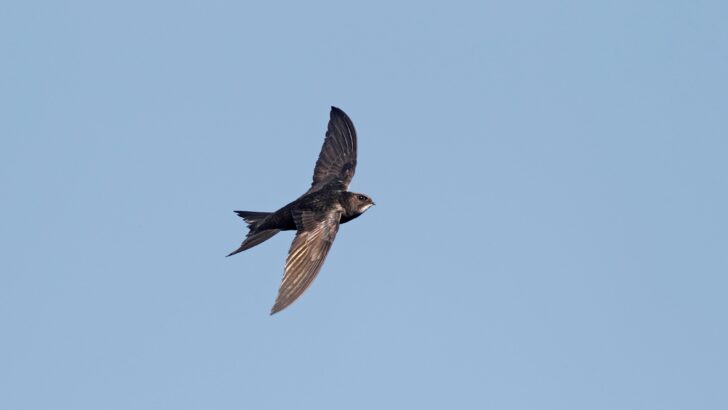
These migratory birds are at risk. Due to changes in the design of modern buildings and the development or demolition of old buildings, many swifts are returning to Britain to discover their old sites have gone. As a result, their numbers have plummeted, and they are now threatened and Red Listed in Britain.
You can add swift bricks and boxes to buildings which offers them a suitable alternative to nest and rear their young. Swifts will start to leave by the end of July and by September, and our skies will be quiet of their cries once more.
Orchids
No group of plants appears to hold as much fascination to botanists as orchids. They can have complex flowers, are one of the oldest flowering plants, and many are extremely rare. There are approximately 52 species of wild orchid in Britain, which flower at different times throughout the warmer months. However a majority tend to be from late spring, so now is an excellent time to go orchid hunting.
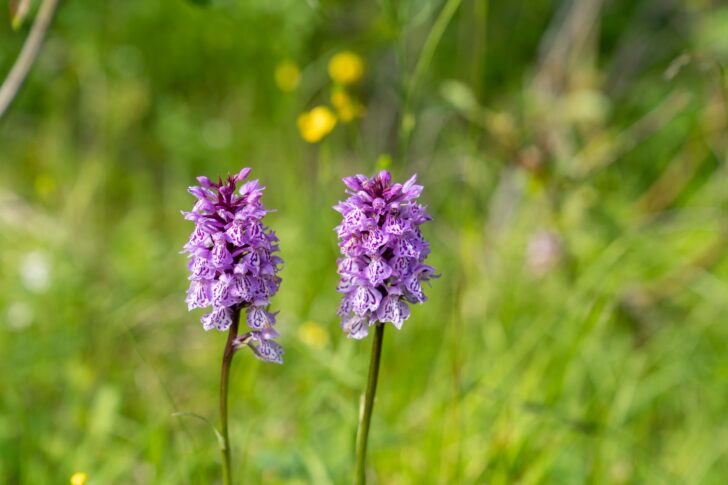
Orchids have dust-like seeds that are wind dispersed, meaning they can be found in most habitats. They will even pop up on verges, in gardens and churchyards, providing the conditions are right. Some of their flowers resemble bees, monkeys, and even tiny men, and the ghost orchid is one of the rarest plants in Britain. Many orchid populations have reduced as landscape management and agricultural practices have changed. Traditional hay meadows tended often weren’t grazed during late spring and summer, meaning orchids had time to flourish. But as agriculture has intensified, these traditional meadows have disappeared and the plants along with them.
It is illegal to pick or uproot orchids, as most other wildflowers in Britain, so make sure you enjoy them at a distance.
Stag beetle
The largest beetle in Britain, the stag is a formidable beetle. Infamous for their strong jaws, stag beetles can grow up to 70mm long and have a distinctive look. They can typically be found in areas of dead wood, which is a prime spot for egg-laying as their larvae rely on it for food. They prefer oak woodlands but can also be found in urban spaces such as gardens or parks. Larvae are great to have in the garden as they don’t eat any living plants, but their consumption of rotting wood helps to replace important minerals in the soil.
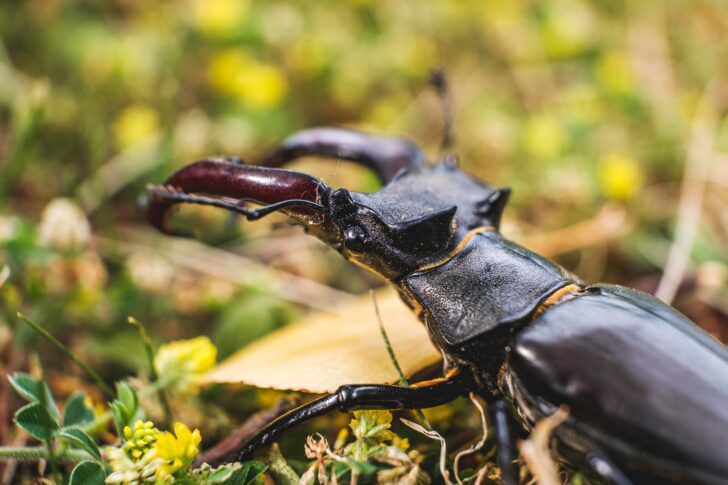
Scientists aren’t sure whether the adults eat at all, but the current thinking is, if they do, then they feed on tree sap. Their adult life is short, emerging in late May and dying off in August. Their sole focus is to mate. Males will attract females by showing off their large jaws and using them to fight other males. They lock jaws, with the strongest emerging the victor. Once mated, the females will typically return to the same spot where they lived as larvae and lay up to 30 eggs in rotting wood or beneath the soil. The larvae remains hidden for several years before emerging as adults.
Sadly, like many species, stag beetles are declining. The ‘tidying up’ of our countryside tends to include removing standing dead wood, tree stumps and log piles, meaning stag beetles have nowhere to lay their eggs. You can support them by creating a log pile, try and include some rotting wood, oak if you can. Also, leave any tree stumps or standing dead wood where possible.
Basking Sharks
For anyone heading to the coast during June there is a chance you will get to see a basking shark. You might think the basking shark a fearsome creature. They’re up to eight metres in length and have that distinctive triangular-shaped dorsal fin that cuts through the surface. But they are gentle creatures and swim with their large mouths open to filter zooplankton and invertebrates.
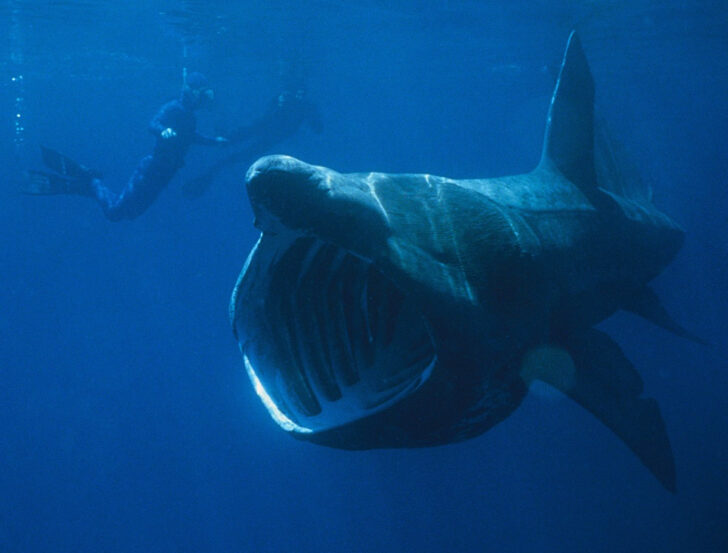
The largest fish in our waters, basking sharks are lured to our shores by increased plankton populations and tend to feed at the waters surface, making them easy to spot. Sharks (including basking sharks) are beautiful but vulnerable animals. Hunting for their fins and skin is severely impacting numbers, particularly because they are long-lived and slow-growing. Marine wildlife can be vulnerable to disturbance, so make sure you are responsible. Watch from a coastal viewpoint, keep your distance, and only use reputable wildlife-watching boats – you can check for WiSE accreditation to be sure.
About the author
Alexandra Pearce-Broomhead is a writer and occasional Guardian Country Diarist from Cornwall. She writes about nature and place, and the human relationship with both. Her work features on BBC Wildlife and BBC Countryfile.
